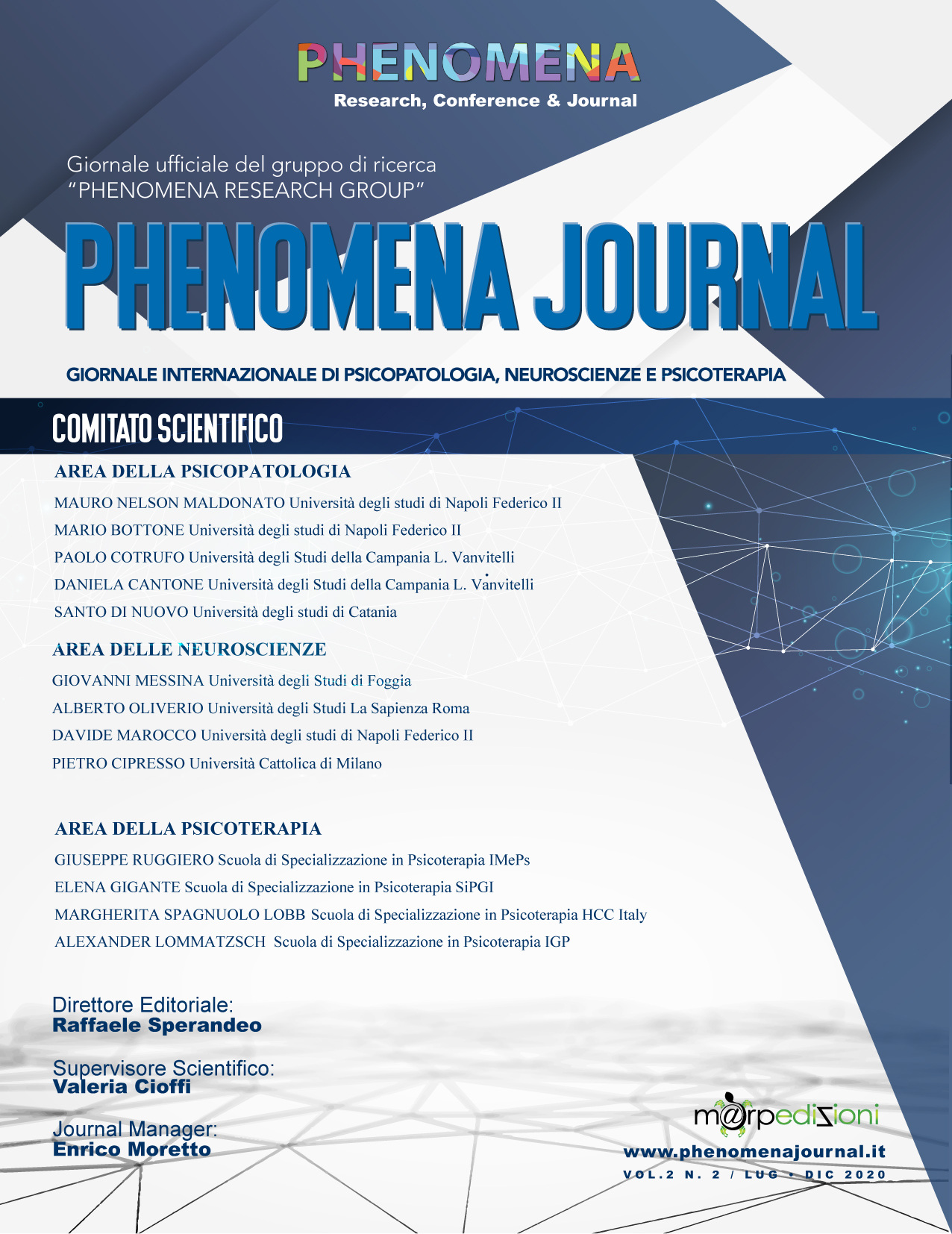Published 2020-10-24 — Updated on 2022-06-16
Versions
- 2022-06-16 (2)
- 2020-10-24 (1)
Keywords
- Autism, intervention, integration
How to Cite
Copyright (c) 2020 Flavia Morfini

This work is licensed under a Creative Commons Attribution-NonCommercial 4.0 International License.
Abstract
The autism studies show a greater degree of scientific evidence. They derive from Applied Behavioural Analysis (Aba) and Cognitive-Behavioural orientation. Gestalt therapy deals with autism recently. The concepts of Gestalt psychotherapy, including the concept of contact boundary, the principle of creative adaptation and the phenomenological perspective of the organism-environment field, are central to the characteristics of autism. These concepts are important, in particular for autism high functioning. Gestalt therapists deal with the value of spirituality in the treatment of people with autism. This is of strong scientific significance. Health includes, in fact, the physical, social, psychological and spiritual aspects as represented by OMS in the 2004 Promoting Mental Health document. The purpose of this work is to produce a contribution in the direction of comparison and integration. The aim is to lay the foundations for the creation of an integrated model for the treatment of high functioning autistic disorder. In order to implement this integration logic, based on the study of scientific data and my clinical experience, the active ingredients present in these three approaches will be identified (Aba, Cognitive-Behavioral Psychotherapy and Gestalt Psychotherapy). The development of a mix of active ingredients allows to obtain a greater control of the possible limits and side effects present in each orientation. The next step is to conduct the assessment through these integration criteria. For this purpose, areas of intervention will be identified in which the examination of the specific characteristics will be described.
Keywords
Autism, intervention, integration

